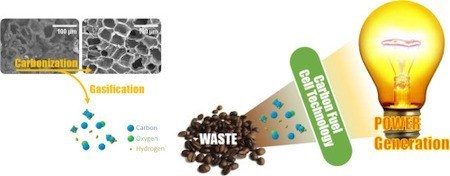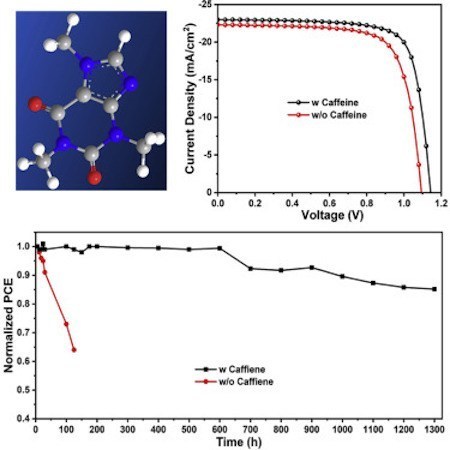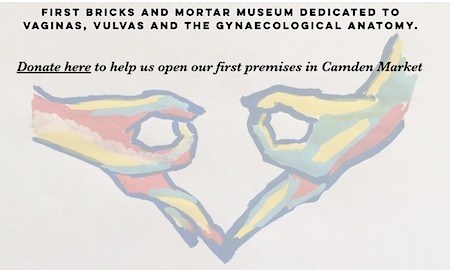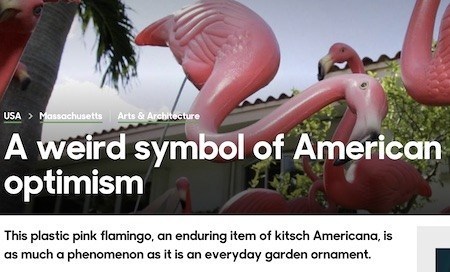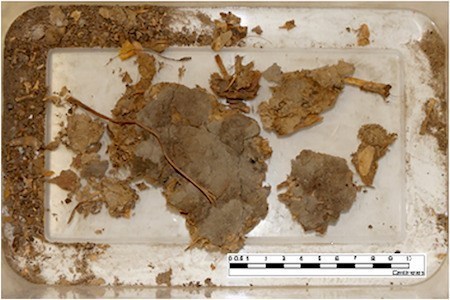Marc Abrahams's Blog, page 150
May 1, 2019
Harvard Business School studies/celebrates Ig Nobel Prize winner Lehman Brothers
Harvard Business School has a special exhibition exploring the history of Ig Nobel Prize winner Lehman Brothers. Max Reyes reports, in the Boston Globe:
Harvard exhibit details the rise and demise of Lehman Brothers
Before it was a titan in the investment banking field, before it engaged in a form of financial sleight of hand that doomed the housing market, before it initiated the largest bankruptcy filing in US history — and threatened to bring the global economy down with it — Lehman Brothers was a general store.
The fabled firm’s history, from its humble beginnings as a family-run business in Alabama during the mid-19th century to its spectacular collapse on Wall Street in 2008, is on display in an exhibit now showing at Harvard Business School’s Baker Library | Bloomberg Center.
The 2010 Ig Nobel Prize for economics was awarded to the executives and directors of Goldman Sachs, AIG, Lehman Brothers, Bear Stearns, Merrill Lynch, and Magnetar for creating and promoting new ways to invest money — ways that maximize financial gain and minimize financial risk for the world economy, or for a portion thereof.

Turbo charging a 120-volt hot dogger on 250 volts
Bigclivedotcom offers this video adventure in electrical/culinary engineering. The official description is “Turbo charging a 120V Presto hot dogger on 250V.”
That led to a further experiment, this in comparative electrical/culinary engineering:
(Thanks to Paul Mansfield for bringing this to our attention.)

April 30, 2019
Electrical power from coffee and coffee grounds, more or less
Two coffee/caffeine/electricity-generation studies to consider:
“Direct power generation from waste coffee grounds in a biomass fuel cell,” Hansaem Jang, Joey D. Ocon, Seunghwa Lee, Jae Kwang Lee, and Jaeyoung Lee, Journal of Power Sources, 296 (2015): 433-439.
“Caffeine Improves the Performance and Thermal Stability of Perovskite Solar Cells,” Rui Wang, Jingjing Xue, Lei Meng, Yonghai Yuan, Yu Huang, and Yang Yang, Joule, April 25, 2019.

Recent progress in ‘Super Mario Bros’ studies
 The 30+ years since the launch of Super Mario Bros. have given ample opportunity for scholars to study the game’s possible influences in academia and society at large. Here is a short list of some representative academic works [ all of which can be read in full via the links ] that have documented ramifications of Super Mario Bros. in the fields of :-
The 30+ years since the launch of Super Mario Bros. have given ample opportunity for scholars to study the game’s possible influences in academia and society at large. Here is a short list of some representative academic works [ all of which can be read in full via the links ] that have documented ramifications of Super Mario Bros. in the fields of :-
● Medicine
Playing Super Mario 64 increases hippocampal grey matter in older adults
● Religious Philosophy
Super Mario Strikes Back: Another Molinist Reply to Welty’s Gunslingers Argument
● Mathematics
Optimization of Enemy’s Behavior in Super Mario Bros Game Using Fuzzy Sugeno Model
● Computation
Super mario as a string: Platformer level generation via lstms
● and Humour
Super Mario, the new silent clown: Video game parodies as transformative comedy tools

April 29, 2019
The Vagina Museum is Looking for Donations
“Welcome to the project to create the world’s first bricks and mortar museum dedicated to vaginas, vulvas and the gynaecological anatomy,” says the web site of The Vagina Museum, which goes on to say: Donate here to help us open our first premises in Camden Market.”
Camden Market is in London, which is in the UK, which is in Europe, but may soon not be. We have not been apprised as to the Vagina Museum’s position or role, if any, in Brexit.
(Thanks to Patricia Brennan for bringing this to our attention.)

April 26, 2019
BBC History of the Plastic Pink Flamingo
“This plastic pink flamingo, an enduring item of kitsch Americana, is as much a phenomenon as it is an everyday garden ornament,” writes Linda Laban, introducing the BBC’s history of the Ig Nobel Prize-winning plastic pink flamingo.
The 1996 Ig Nobel Prize for art was awarded to Don Featherstone, for his ornamentally evolutionary invention, the plastic pink flamingo.

How to do the stamp test (for erections) if you can’t purchase stamps
To assess erections, Dr. Susan Lundgren, in this two-minute educational video, tells and shows how to make and use your own perforated stamps, if you can no longer find perforated stamps for sale at the post office:
The Stamp Test
The stamp test is the standard, simple, reliable, inexpensive, quick test for whether a man’s sexual organ is physiological functional.
The stamp test’s inventors were awarded the 2018 Ig Nobel Prize for reproductive medicine. The prize was awarded to John Barry, Bruce Blank, and Michel Boileau, for using postage stamps to test whether the male sexual organ is functioning properly—as described in their study “Nocturnal Penile Tumescence Monitoring With Stamps.” (You can watch historic video of Drs. Barry, Blank, and Boileau accepting their Ig Nobel Prize.)
Those inventors documented their prize-winning research, in the study “Nocturnal Penile Tumescence Monitoring With Stamps,” John M. Barry, Bruce Blank, Michael Boileau, Urology, vol. 15, 1980, pp. 171-172.
What Came Before the Stamp Test: Machines
Before the Stamp Test was invented, doctors used more elaborate, expensive, awkward, embarrassing, perhaps less reliable means to try to answer the question of whether a man’s natural equipment still functions. One of those machines is the RigiScan (and a later version, the RigiScan Plus!). The RIgiScan sometimes itself has problems, as Dr. Michael Werner tells and shows in this six-minute educational video:

April 25, 2019
‘Necro Advertising’ – the pros and cons [new study]
They are known, in advertising circles as ‘Delebs’ (deceased celebrities) . . .
“Unbeknown to them, Marilyn Monroe, Audrey Hepburn, Steve McQueen and Gene Kelly, among others, recently presented products in ads for high- and low-equity brands.”
A new paper in the Journal of Business Ethics describes experiments which have, for the first time, examined whether deleb ads might be a good idea or not.
 The investigators conclude that :
The investigators conclude that :
“The results of two experimental studies show that a low-equity brand is more likely to be perceived as unethical when using necro-advertising since consumers have limited knowledge about these brands. Conversely, our findings confirm how a high level of equity prevents from the aforementioned adverse effects since these brands’ assets send a credible signal about their capability to get approval from a deceased celebrity’s estate for the use of its image. “
See: An Ethical Perspective on Necro-Advertising: The Moderating Effect of Brand Equity, Journal of Business Ethics, April 2019, Volume 155, Issue 4, pp 1077–1099.
BONUS: A piece in the UK industry monthly Campaign recalls a 2007 deleb ad. for Dr. Martens boots (DMs).
“Dr Martens’ agency Saatchi & Saatchi took the ill-advised decision to used deceased Nirvana frontman Kurt Cobain in an ad that depicted him in heaven. Wearing DMs. The ad, which appeared in music mag ‘Fact’, led to the agency being fired by the client. Another execution featuring dead Sex Pistol Sid Vicious didn’t help.”

April 24, 2019
“The funniest scientific lecture I’ve ever been to”
A student who attended her first Ig Nobel event—earlier this month, at Stockholm University—tries to describe the experience:
I admire very much all those creative scientist that come up with unexpected ideas, and when I found out that there was going to be an Ig Nobel lecture in Stockholm I new that it was an opportunity I could not miss. Very unexpectedly, I ended up playing a role in the lecture, and was even funnier than I could have ever imagined….
Read the details in her blog account: “Ig Nobel Stockholm: the funniest scientific lecture I’ve ever been to“.

A Person Who Swallowed a Snake Whole (But Died)
This new study, describing a now-long-dead person who ate a snake whole, is reminiscent of the Ig Nobel Prize-winning study about swallowing a shrew. The new study is:
“Analysis of a coprolite from Conejo Shelter, Texas: Potential ritualistic viperous snake consumption,” Elanor M. Sonderman, Crystal A. Dozier, Morgan F. Smith, Journal of Archaeological Science: Reports, vol. 25, June 2019, pp. 85-93. The authors, at Texas A&M University and Wichita State University, report:
This paper presents an analysis of the floral and faunal remains of a single human coprolite recovered from Conejo Shelter, Texas…. Zooarchaeological analysis found the remains of a small rodent, evidently eaten whole, with no indication of preparation or cooking. Notably, the bones, scales and a fang of a snake in the Viperidae family were also recovered from the coprolite, which is the first direct archaeological evidence of venomous snake consumption known to the researchers….
We propose that the ingestion of an entire venomous snake is not typical behavior for the occupants of the Lower Pecos or Conejo Shelter.
Geroge Dvorsky, writing in Gizmodo, has a report about this report, with the headline “Fossilized Human Poop Shows Ancient Forager Ate an Entire Rattlesnake—Fang Included.”
Ig Nobel Prize-winning study
The 2013 Ig Nobel Prize for archaeology was awarded to Brian Crandall and Peter Stahl, for parboiling a dead shrew, and then swallowing the shrew without chewing, and then carefully examining everything excreted during subsequent days — all so they could see which bones would dissolve inside the human digestive system, and which bones would not.
They documented their research, in the study “Human Digestive Effects on a Micromammalian Skeleton,” Peter W. Stahl and Brian D. Crandall, Journal of Archaeological Science, vol. 22, November 1995, pp. 789–97.

Marc Abrahams's Blog
- Marc Abrahams's profile
- 14 followers



